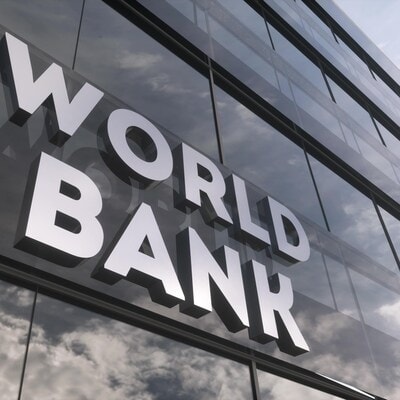[ad_1]
The World Bank on Tuesday advocated India to reevaluate its regional integration strategy, including its position not to join the Regional Comprehensive Economic Partnership (RCEP) as part of a strategy to achieve the $1 trillion export target by 2030.
“India does not participate in mega trade blocs such as the RCEP, while other South Asian countries such as Bangladesh and Sri Lanka have recently indicated interest in integrating with this East Asian regional trade and GVC (global value chain) hub. As smaller, regional economies are considering trade agreements beyond South Asia, India may want to reevaluate its regional integration strategy, including its position in RCEP. In an ideal situation, more emphasis on plurilateral and multilateral cooperation would be beneficial,” the multilateral lending agency said in its latest India Development Update report.
However, the World Bank’s India country director, Auguste Kouame, told reporters that it is for India to take a final call. “Trade is good and being part of a trading bloc is good. We don’t have specific recommendations on specific trading blocs. This is for countries to decide and for India to decide whether it wants to be a part of RCEP or not… We don’t get into trade negotiations between countries,” he added.
The report said that India has significantly scaled up its use of protectionist measures, such as increased tariff and non-tariff barriers, as well as industrial policies affecting trade in goods and services, while stressing the critical role of trade in boosting growth.
It noted that the India trade deal with the European Free Trade Association (EFTA) excludes key areas such as digital trade, e-commerce, pharmaceuticals, and MSMEs, limiting its overall impact.
The World Bank’s report, in the chapter titled “India’s trade opportunities in a changing global context”, said that on trade, India is punching well below its weight and not leveraging global value chains to their full potential. As China withdraws from low-skill manufacturing due to increasing wages, India has the potential to capitalise on this opportunity, the World Bank said.
The report said that India was not among the primary beneficiaries of China’s shrinking market share. India’s share in global exports of apparel, leather, textiles, and footwear initially grew from 0.9 per cent in 2002 to a peak of 4.5 per cent in 2013, but it declined to 3.5 per cent in 2022. Countries such as Bangladesh and Vietnam, Germany, and the Netherlands were the primary beneficiaries of decreasing participation of China in low-skill manufacturing, the report said.
“Despite its rising economic heft, India’s trade in goods and services has been declining as a percentage of GDP over the last decade, and it is lower than in countries at similar stages of development,” the World Bank said.
The report recommended a three-pronged approach towards achieving the $1 trillion merchandise export target by 2030 by reducing trade costs further, lowering trade barriers, and deepening trade integration. “India will need to diversify its export basket even further and enter new markets,” the World Bank said.
On the issue of the carbon border adjustment mechanism (CBAM), World Bank economist Nora Dihel said that it was a big export potential for India. The report also highlighted that India can capitalise on the opportunity by investing in clean technology, promoting sustainable production and consumption, and implementing policies to reduce greenhouse gas emissions.
The report also noted that almost 3,000 new trade-distorting measures were imposed in 2023, which was three times as many as in 2019, and a significant proportion were through industrial policy, with the most active practitioners including the US, China, India, and most of the EU economies.
First Published: Sep 03 2024 | 6:49 PM IS
[ad_2]
Source link

